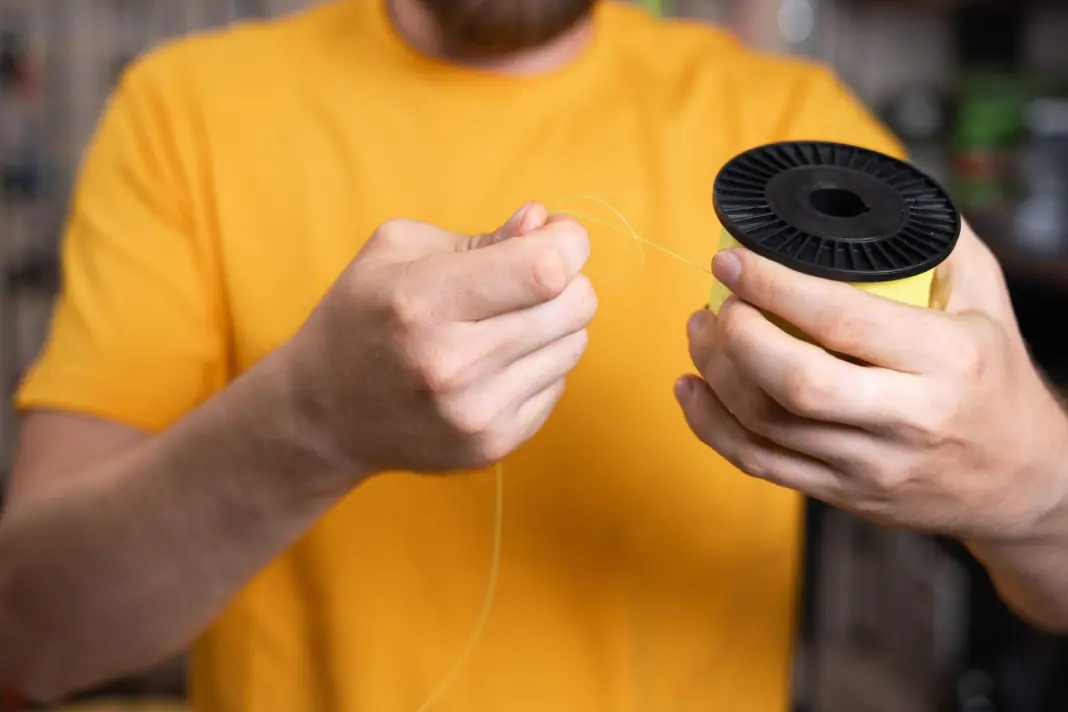Fishing enthusiasts understand the critical role fishing lines play in the art of angling. The choice of fishing line can significantly affect casting efficiency, sensitivity, and ultimately, the number of bites you convert into catches. The three most prominent types of fishing lines—monofilament, fluorocarbon, and braided—each offer distinct characteristics. In this guide, we’ll explore these types in depth to help you make informed decisions when gearing up for your next fishing adventure.
Monofilament Line
What is Monofilament Line?
Monofilament, often referred to as “mono,” is a type of fishing line made from a single strand of material, typically nylon. It has been a staple for anglers for decades due to its versatility and affordability.
Characteristics of Monofilament
- Stretchability: Monofilament is known for its high stretchability, which can be a double-edged sword. On the one hand, it allows for better shock absorption when fighting fish, reducing the likelihood of breaking. On the other hand, excessive stretch can reduce sensitivity, making it more challenging to detect subtle bites.
- Buoyancy: This line generally floats, making it ideal for topwater fishing.
- Knot Strength: Mono offers excellent knot strength, which enhances its reliability in various fishing situations.
Pros and Cons of Monofilament
Pros:
- Affordable and widely available.
- Stretch provides shock absorption.
- Easy to handle and knot.
Cons:
- Prone to UV degradation and wear over time.
- Higher visibility underwater can spook fish under clear conditions.
Best Use Cases
Monofilament is ideal for beginners due to its forgiving nature. It is perfect for surface lures and fishing situations where line visibility is not an issue.
Fluorocarbon Line
What is Fluorocarbon Line?
Fluorocarbon lines are made from a dense polyvinylidene fluoride (PVDF) material. These lines have become increasingly popular due to their low visibility and other unique properties.
Characteristics of Fluorocarbon
- Invisibility: Fluorocarbon refracts light similarly to water, making it nearly invisible underwater. This property makes it especially useful in clear water and when targeting wary fish.
- Density: Fluorocarbon is heavier than monofilament, causing it to sink faster and making it excellent for deep-water fishing.
- Abrasion Resistance: It provides superior resistance to abrasion, which is beneficial when fishing in rocky or debris-filled waters.
Pros and Cons of Fluorocarbon
Pros:
- Low visibility underwater.
- Sinks quickly, useful for diving lures and bottom fishing.
- Resistant to abrasion and weathering.
Cons:
- Generally more expensive than monofilament.
- Less stretch can lead to breakage if not managed properly.
- Stiffer and more challenging to knot, especially under cold conditions.
Best Use Cases
Fluorocarbon excels in clear bodies of water and environments with a lot of cover or debris. It’s an excellent choice for bass fishing, particularly when using crankbaits and jig rigs.
Braided Line
What is Braided Line?
Braided fishing lines are constructed from multiple strands of synthetic material, woven tightly together. Their advent represents innovation in line design, offering unparalleled strength and performance.
Characteristics of Braided Line
- Strength: Braided lines provide high strength-to-diameter ratios, meaning they can pack more weight capacity into smaller line diameters.
- Sensitivity: With almost zero stretch, braided lines transmit vibrations effectively, allowing anglers to feel even the slightest bites.
- Durability: These lines are incredibly durable and resistant to decay, significantly outlasting other types.
Pros and Cons of Braided Line
Pros:
- Strong and sensitive, with minimal stretch.
- Smaller diameter allows for more line on the reel.
- Long-lasting and durable.
Cons:
- High visibility in water, potentially spooking fish.
- More expensive upfront cost.
- Can dig into the spool when under heavy tension.
Best Use Cases
Braided line is ideal for situations requiring strength and sensitivity, such as deep-sea fishing or heavy cover freshwater fishing. It is also common in situations where abrasion resistance is necessary, such as fishing around dense vegetation or structures.
Choosing the right fishing line involves weighing the benefits and drawbacks of monofilament, fluorocarbon, and braided lines. Each line type provides unique advantages tailored to specific fishing methods and environments. Understanding these differences can empower anglers to make strategic choices, optimizing their chances of a successful fishing trip. As always, consider the type of fishing you plan to do, the species targeted, and the fishing environment to select the most suitable line for your needs. Experimenting with different lines can also offer insights into what works best for your personal style and specific conditions.



